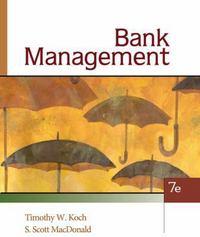

Identify the types of discrimination experienced by immigrants, women, and workers of darker skin colors in Qistan.
FBA/PHS2123/APRIL21 SECTION A: CASE STUDY (100 MARKS) READ THE CASE CAREFULLY. YOU ARE REQUIRED TO ANSWER ALL THE FOLLOWING QUESTIONS BASED ON THE CASE GIVEN. Qistan is a small country. It's economy relies heavily on revenues from tourism. Qistan is one of the world's most popular tourist destinations. It offers visitors the perfect mix of a cosmopolitan city with traditional aspects of local culture and civilization. Low season is summertime in Qistan as temperatures begin to become extremely high, with an average temperature of 50 degree Celsius. During summers, the number of tourists normally drops by 60 to 70 percent, thus causing unemployment in the tourism industry to hit the highest rates. Another important source of national income of Qistan is oil production. Unfortunately, Qistan's oil reserves are running out significantly. At current production rates, Qistan's oil reserves are estimated to be exhausted in 50 years. Qistan's long-term countermeasure is to diversify from an oil-reliant economy to an economy that is technology-based. However, this economic transformation has caused many blue-collar workers to lose their jobs. Their skill levels are inadequate when new industries are created and advanced technologies are applied in traditional industries. The population of Qistan is estimated at around 600,000 as of 31" December 2020. 80 percent of the total population are older than the legal working age and are not institutionalized. Full-time students, full-time homemakers, pensioners, and discouraged workers are as many as 48 thousand, 69 thousand, 96 thousand, and 7 thousand respectively. 220,000 workers work full time whereas another 22,000 work part time. The politics of Qistan has been dominated by two major political parties shortly after the founding of the country. The Democratic Party is more aligned towards liberal philosophy whereas the Republican Party is more conservative. One of the main differences between the two political parties is that Democrats favor increasing the minimum wage whereas Republicans argue that wages need to be fixed by the free market. When it comes to tax matters, Democrats believe that higher tax rates should be imposed on higher income groups while on the contrary, Republicans do not subscribe to the viewpoint that richer people need to pay more taxes. The Qistan work culture is characterized by hard work, loyalty, discipline, punctuality, devotion, and team spirit. As time passes by, this work culture is fading. Young Qistanian workers are increasingly adopting leisure habits. Research showed that although young Qistanians still work hard, most of them are more interested in leisure than their parents. In response to these work-leisure changes, the government is considering to cut overall working hours and reduce the standard workweek from 6 days to 5 days. Recently the Qistanian government has raised the nation's hourly wage rates. This change has caused the working hours of higher-income groups to fall from 55 to 53 hours per week. On the other hand, the same change has increased the weekly working hours of lower-income groups from 60 to 65 hours. Higher wage rates have also attracted an influx of immigrants from poorer neighbouring countries into Qistan. However, these immigrants are sometimes illegally paid lower wages by their employers for performing substantially equal work as native workers. CONFIDENTIAL/2FBA/PHS2123/APRIL21 Qistan has been experiencing economic growth since 1970s, except in years 1985, 1998 and 2008. In those three years, unemployment rate rose by 4.7%, 5.6% and 3.9% respectively. In year 2019, Qistanian workers produced an hourly output of USD 280 and the figure jumped up to USD 325 in year 2020. Labor market discrimination is common in Qistan. For instance, many profit-maximizing employers are reluctant to hire women or invest in women's human capital because experience tells that female workers tend to have lower levels of commitment towards their job once they have to fulfill their family responsibilities. In other circumstances, employers discriminate against employees of darker skin colors, causing them to be under- represented in jobs which pay higher wages. Some other employers refuse to employ ethnic minorities not because they are less suitable employees but simply due to employers' irrational distaste for minorities. Nonetheless, some economists argued that gender differences in labor markets might not solely be due to employers' discriminatory behavior but attributable to various non-discrimination reasons too. CONFIDENTIAL/3










